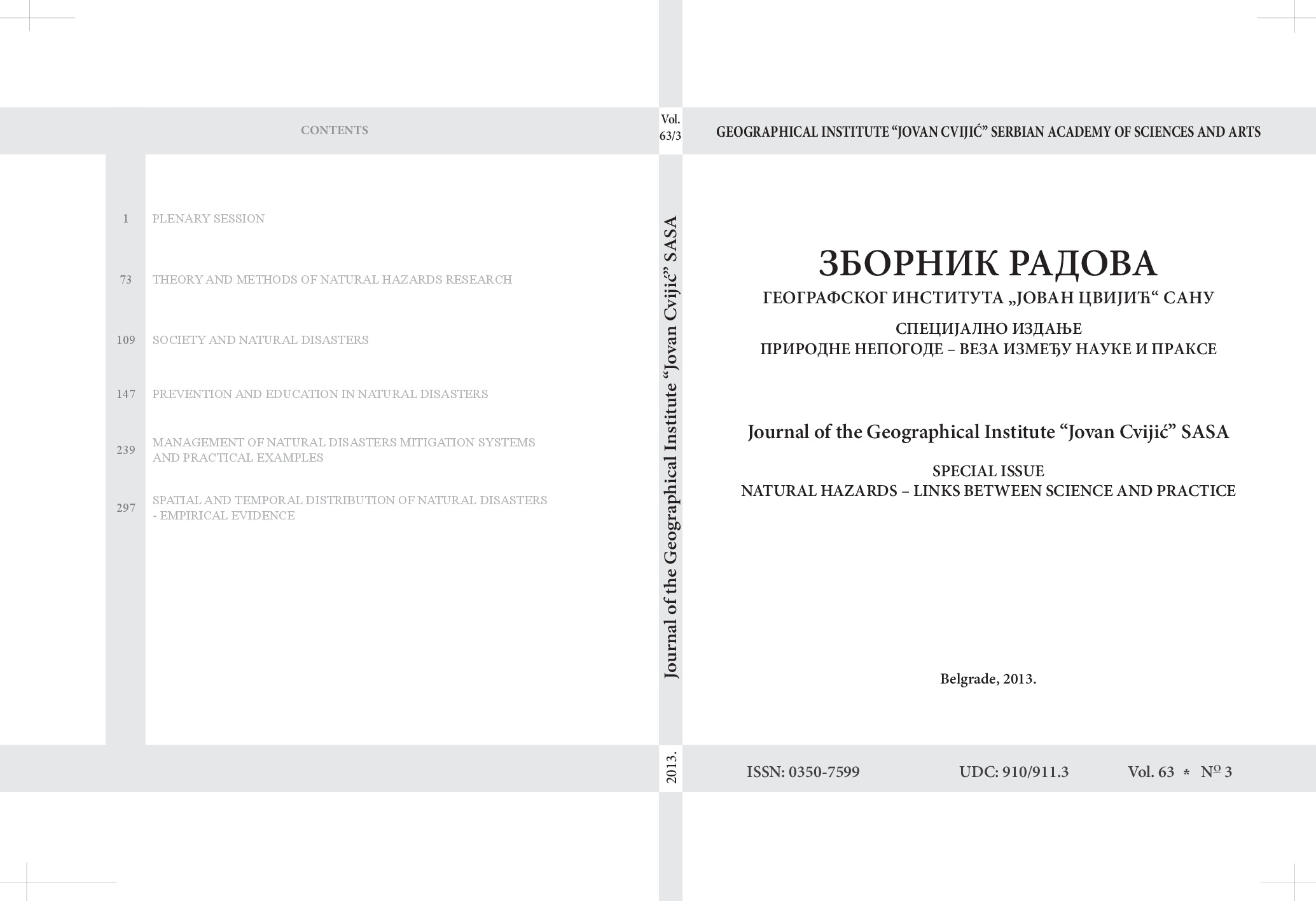Safety And Resiliency In Action:Integrating Risk Management Into Local Development
Safety And Resiliency In Action:Integrating Risk Management Into Local Development
Author(s): Jorge S. EbaySubject(s): Economy, Governance, Management and complex organizations, Political Ecology
Published by: Географски институт »Јован Цвијић« САНУ
Keywords: risk management; local development; resiliency;
Summary/Abstract: This paper examines the efforts of the local government unit (LGU) of San Jose de Buenavista, in the Province of Antique in central Philippines to manage risks associated with multiple hazards to protect the people, their livelihoods and local development gains. More specifically, it analyzes the process of pursuing risk management objectives vis-a-vis national and international disaster risk reduction and management (DRRM) norms, without loosing sight of local contextual realities that directly influence people’s vulnerabilities and capacities. Risk management initiatives in the LGU revolve around four key areas namely disaster prevention and mitigation, disaster preparedness, emergency response, and recovery and rehabilitation.Binding these initiatives are actions that integrate governance mechanisms with scientific data and sectoral and community participation to develop a comprehensive plan of action and standard operating procedures that will serve as guideposts in the process of building a safer community. The experience of San Jose de Buenavista also suggests that cost saving strategies an be replicated by communities and organizations that have financial limitations to pursue DRRM objectives. This paper contends that risk management is a fundamental development strategy to pursue local development goals and to sustain efforts to protect development gains in the long run. This can be done using a combination of governance, risk assessment, knowledge management, vulnerability reduction and preparedness strategies. Local leadership, people’s participation, environmental resource management and continuous capability building are key elements of the process.Ultimately, risk management must be mainstreamed into local development to develop community resiliency.
Journal: Зборник радова Географског института "Јован Цвијић" САНУ
- Issue Year: 63/2013
- Issue No: 3
- Page Range: 33-46
- Page Count: 14
- Language: English

